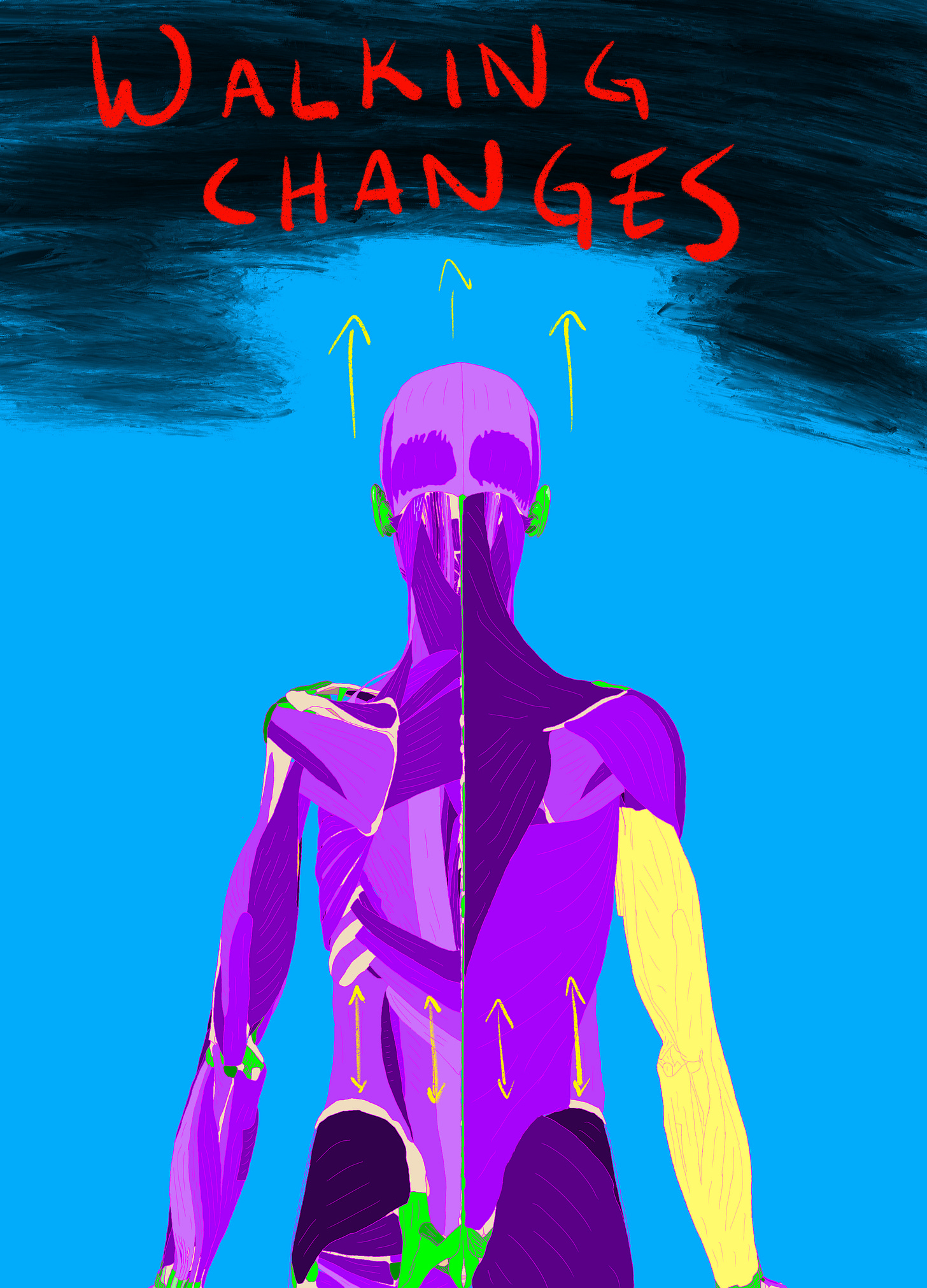Why is Walking the Best Exercise?
Walking Changes Everything
Early on in a course of Alexander Technique lessons I’m frequently asked, “What exercises can I do?”. I’ll do my best to say that it’s enough to just build a habit of doing lie downs and noticing how we have this wretched tendency to drop our heads into dead weight and/or stiffen our necks, but this can feel far too mysterious for most people. It often leaves students - even one’s that feel terrific “postural”1 changes in a lesson - with the feeling that they aren’t doing enough to get better.
The desire to feel better, exercise, and build strength can be a HUGE draw for many of us and it can feel very frustrating to feel like an Alexander Technique teacher is telling you to STOP, SLOW DOWN, and THINK.
To make matters even worse, I’ll say to my students that if they want to get moving, walking is THE BEST. I’ll do my best to dissuade them from isometric activities like planks and I’ll try to point out how they stiffen their necks doing push ups (planks + movement). Ideally, I want them to be able to do anything they choose but the more complex the exercise the more likely things are to go poorly with a new sense of balance than well.
Rather than fret about what is good and what is not good at a general level, I figured I would share a little story from my lessons last week to try and illustrate WHY I love walking so much!
Last Week’s Teaching
Last week I was working with a student. I think they’ve had nearly 30 lessons at a frequency of twice per week so they’ve hit that mythic marker and basically understand what the Alexander Technique is all about. They’ve absolutely learned to take more time and practice all the things that I’ve written about in this blog to one degree or another. This is no small feat!
During our last lesson, I think we spent roughly 45 minutes doing table work. I find it easiest to teach the subtleties of the head, neck, and upper back relationship while the student lies down for a variety of reasons. Mostly, it really just takes time and quiet for that area to thaw.
After the lie down, we spent some time looking at walking. It’s something that we’ve done before but at the 30 lesson marker (and with 4 months of practice) they had the hang of the basics:
Don’t shove the head forward
Don’t shove the hips forward
Think about a balanced midline through the torso (i.e. stay back and up)
We didn’t do ANYTHING new in this lesson. However, the neck just released a little bit more, the head found more height, and the rib cage had some more volume. After walking for a few steps, the student remarked,
My back muscles feel like they’re really working. Is that supposed to happen?
To which I emphatically said, “YES!”.
Let’s take a look at what happened…
I’m drawing yellow arrows in the image above to indicate the changes that the student sensed. Up at the top, the arrows are indicating how the head found slightly more height (helicopter floating up a bit). This gesture takes the weight of the head from one of dead weight to sprung weight and begins to train the muscles of the neck to support the weight of the head differently. This is a subtle form of body weight training for the neck muscles and in the case of this student, their stamina and subtlety with this balancing act has increased a lot in 4 months.
Last week, this new degree of coordination trickled down to the mid back. As the head found more “up”, the region of the torso between the ribs and the hips began to expand into length. You can see my attempt to draw this in the arrows above.
This is a terrific sensation and can give you a really strong sense of how the head and neck affect the compression (or decompression) of your joints all over and how this sense of decompression is coupled with muscular length, balance, and a new kind of work. The sensation should feel quite tall and buoyant.
The stamina to pull of a new kind of expansion like this is quite limited in the beginning. I often think of this as doing a “vertical plank”2. You will find moments where you have the stamina to sustain this balance and it may be followed with BIG moments of fatigue. If I go for a big walk (60-90 minutes) and I walk this way, I feel absolutely EXHAUSTED the next day.
Handy Tips
Don’t carry a bag on your walk (if you want to walk like I’ve described for exercise).
Don’t rush.
Sit as often as you like on benches to give yourself frequent rests.
This should be at a cafe with an espresso and sparkling water.
while wearing your new Eze shirt.
Get In Touch
If you have any questions about walking, please reach out and I’ll do my best to answer! Ask in the comments below or hit the like button. You know, all those good social interaction things for the algos!
If you’re in NYC, you may learn more about my private teaching practice at johndalto.com.
If you’d like to book any lesson time with me, you can find my booking link here.
Please don’t try to directly change your posture! Always try your best to let the technique create a change as a consequence of your process of working!
Under no circumstances do I mean that you are to brace your abdominal muscles and hold your breath… These should feel like expansive sheets of pliable strength.



The 'vertical plank' idea really clicked for me. This is such a clear way to understand subtle strength. Another great post.